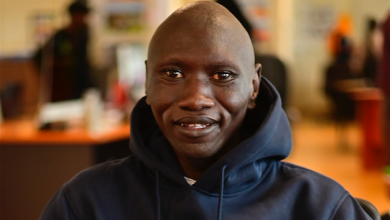
Two new STI strains have been identified by researchers at the Kenya Medical Research Institute (Kemri) among females in Busia County, a border region in Kenya.

When the researchers found novel mutations in the chlamydia and gonorrhoea-related genes, they were trying to figure out why STI cases were increasing at two hospitals in the area.
Endocervical swabs were obtained from 424 Kenyan women aged 15 and older who had STI symptoms using sequential sampling.
All of the women had tested positive for gonorrhea and chlamydia, they learned.
The two novel mutations found in the MtrR and 23S rRNA genes that were linked to macrolide resistance were described by Prof. Samson Muuo, the assistant principal research scientist at the Center for Microbiology Research at Kemri.
Macrolides are drugs used to manage and treat bacterial infections.
The researchers will analyze the sociodemographic characteristics of the sampled women, including the use of protection during sex, histories of using antibiotics, comorbidities, and previous similar infections.
Prof Muuo pointed out that co-infection is not new in diseases and that the phenomenon exhibited in the study is expected when one is exposed to different pathogens.
He further disclosed that the mutations of gonorrhoea and chlamydia they found were attacking as a pair, indicating that the STIs are prevalent in the region. The researchers noted that chlamydia trachomatis, Neisseria gonorrhoeae, and Mycoplasma genitalium are among the most commonly reported causes of urogenital tract infections in women.
Mutations in the 23S rRNA gene, the drug binding site, significantly cause resistance in C. trachomatis and M. genitalium. In N. gonorrhoeae, mutations in the mtrR gene can lead to macrolide resistance.
Ms Shillah Simiyu, a Kenyan epidemiologist who works at the World Health Organization African Region Office, explained that Busia presents high sexually transmitted disease numbers due to increased sexual activities by virtue of being a border town where truck drivers stop.
She joined Prof Muuo in advocating for a mixed-methods study that involves social, epidemiological, and laboratory science approaches to address the issue.
Dr. George Njoroge, the founder of the Naivasha-based Centre of Africa’s Life Sciences, expressed a lot of concern over the two new mutations, stating that nobody knows whether the regular antibiotics would work and whether clinical trials would be necessary.
The discovery of new STI strains calls for increased vigilance among Kenyans to prevent the spread of the infections.
Experts advise the public to practice safe sex and seek medical attention if they experience STI symptoms.
The study is also a call to action for the government to invest more in research and health infrastructure to prevent the spread of infections and provide appropriate treatment.
The discovery of the new mutations and the prevalent STIs in Busia County is a warning sign for the whole country and the East African region, where STIs are prevalent.










